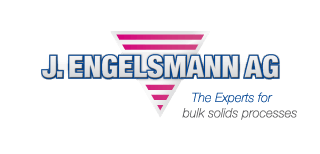15.03.2017
When Things Get Lumpy: Reliably Breaking up Agglomerates in Product
Straining screens are part of the centrifugal screening machine family. They are predominantly used when the product to be process tends to become compacted and form agglomerates which then interfere with further processing in downstream stages of production. The heart of every straining machine is the sieve basket and the rotating rotor with the straining ledges. The material flows into the sieve through the inlet, is captured by the rotor and, with the help of the straining ledges, is pressed through the screen mesh. The product thus freed of agglomerates is then discharged from the straining screen through the outlet and can be conveyed on into the production process via the accordingly fitted conveying or dosing devices. The following case studies show how the greatest possible benefit is achieved through optimal adaptation of the screen to suit the product properties and the production environment.
An Engelsmann customer uses a very finely powdered, organic and non-conductive material which forms small agglomerates during the drying process for the production of plastic. The agglomerates need to be broken up before further processing in order to ensure the optimal quality in the end product. For this task, the company was originally using a lump breaker which was connected downstream from the dryer and to a pneumatic rotary valve on the outlet side which dosed the prepared product into a pneumatic conveying pipeline. The old lump breaker was no longer delivering the desired results, so the customer decided to replace it with a straining screen from Engelsmann – particularly since they already had a similar straining screen solution in operation in another production facility which was working perfectly.
The JEL PS – straining screen was equipped with reinforced feed and discharge hoppers. The screen is connected to the dryer on the inlet side and the rotary valve on the outlet side via appropriate flange connections. Upon request by the customer, level indicators were installed in both hoppers: on the feed side, there is an empty signal if the product coming from the dryer is less than a minimum fill level in the hopper. Conversely, at the outlet there is a full signal if the material column reaches a critical height above the pneumatic rotary valve. The feed-in to the screen and the material discharge is automatically controlled through this signalling in order to ensure a smooth, continuous screening process.
After the drying process, the product has an output grain size of max. 20 x 30 x 5 mm and should be reduced to a final grain size of less than 10 mm with the help of the straining screen. The mesh of the sieve basket was therefore designed as a perforated sheet with a mesh size of 10 mm. In order to further optimise the screening process, the straining ledges at the rotor are adjustable, allowing for adjustment of the distance between the straining ledges and the screen mesh.
The sieve basket itself can be fully pulled out from the front side of the screen in just a few easy steps (see Fig. 1), greatly facilitating the operator's access to the inner housing for the purposes of cleaning and maintenance. In addition, the pull-out mechanism is secured with an end switch so that the screen automatically switches off for the operator’s protection when the sieve basket is pulled out.
Since the dry powder has a tendency to generate dust, the cover flap connected to the sieve basket, as well as the flange connections between the screen housing and the hoppers, have PTFE seals which reduce dust emissions to a minimum during operation. Air barrier rings with gap purging were used as bearings for the rotor in order to purge the product residue which could have a negative effect on the service life of the bearings and the seal.
All parts which come into contact with the product such as the inner housing, the rotor or the straining ledges have been made from stainless steel 1.4571 or 1.4404 – with pickled and passivated surfaces.
Owing to the dust generated, the entire production environment is an ATEX protection zone – so the JEL PS straining screen incl. the electric drive were designed accordingly as an ATEX variant (zone 22 in the product area).







